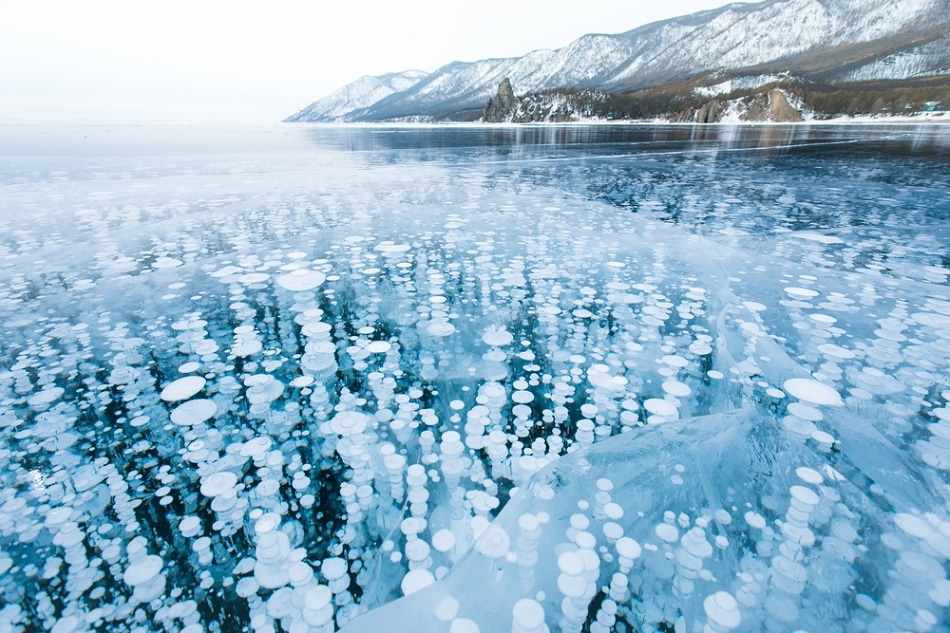Oct 9 2019
Methane is a powerful greenhouse gas that is released into the atmosphere through natural processes as well as human activities, such as agriculture and energy production.
 Strelyuk / Shutterstock
Strelyuk / Shutterstock
To forecast the influences of human emissions, scientists need a full picture of the methane cycle in the atmosphere. They must be aware of the size of the inputs—both natural and human—and the outputs. They must also know how long methane stays in the atmosphere.
In order to gain insights regarding this, Tom Weber, an assistant professor of earth and environmental sciences at the University of Rochester; undergraduate researcher Nicola Wiseman ’18, presently a graduate student at the University of California, Irvine; and their colleague Annette Kock from the GEOMAR Helmholtz Centre for Ocean Research in Germany, employed data science to establish how much methane is released from the ocean into the atmosphere annually.
The study outcomes have been reported in the journal Nature Communications, and fill an age-old gap in methane cycle research. The results will help climate scientists better evaluate the degree of human perturbations. The research is part of Weber’s attempts to utilize data science to gain better insights into how different greenhouse gases, including carbon dioxide and nitrogen, impact global climate systems.
Minding the Methane Budget
Every three years, an international team of climate scientists known as the Global Carbon Project updates what is referred to as the methane budget. The methane budget echoes the present state of perception of the inputs and outputs in the global methane cycle. It was previously updated in 2016.
The methane budget helps us place human methane emissions in context and provides a baseline against which to assess future changes. In past methane budgets, the ocean has been a very uncertain term. We know the ocean naturally releases methane to the atmosphere, but we don’t necessarily know how much.
Tom Weber, Assistant Professor, Earth and Environmental Sciences, University of Rochester
If one term is unclear in the methane budget, it adds ambiguity to all the other terms, restricting the ability of the researchers to forecast how the global methane system might vary. Therefore, deriving a more accurate estimate of oceanic methane emissions has been a vital goal of methane cycle study for a number of years.
However, according to Weber, “It’s not easy.” Since the ocean is so massive, only small percentages of it have been tested for methane, implying that data is limited.
Turning to Machine-Learning Models
With a view to solving this drawback, Weber and Wiseman amassed all the obtainable methane data from the ocean and fed it into machine-learning models—computer algorithms developed for pattern recognition. These models could identify systematic patterns in the methane data, enabling the scientists to estimate what the emissions are expected to be, even in regions where direct observations have not been made.
Our approach allowed us to pin down the global ocean emission rate much more accurately than ever before.
Tom Weber, Assistant Professor, Earth and Environmental Sciences, University of Rochester
The latest version of the methane budget will be published later this year and it includes the results from Weber’s paper, offering researchers a proper understanding of how methane cycles across the earth’s system.
Where are Ocean Methane Emissions Most Concentrated?
Besides contributing to gaining improved insight into the global methane budget, the research produced two other stimulating findings.
First, although very shallow coastal waters make up just 5% of the ocean area, they contribute about 50% of the total methane emissions from the ocean. This is because methane can leak out of natural gas reservoirs along continental margins and can be created biologically in anoxic (oxygen-depleted) sediments at the seabed. In deep waters, methane is expected to be oxidized as it moves along a long route from the seabed to the atmosphere.
However, in shallow waters, there is a quick route to the atmosphere and methane gets discharged before being oxidized. At present, Weber is partnering with John Kessler, a professor of earth and environmental sciences at Rochester, to resolve the remaining ambiguities in coastal methane emissions by carrying out research cruises and designing more machine-learning models.
Second, methane shows a spatial pattern quite similar to that of phytoplankton abundance, thus supporting a debatable recent hypothesis that plankton creates methane in the surface ocean. Earlier, researchers believed methane could only be synthesized in the anoxic conditions observed at the ocean’s floor. “Evidence is gradually accumulating to overturn that paradigm, and our paper adds an important piece,” stated Weber.
All natural sources of methane are also probably sensitive to climate change, and it is vital for scientists to have a precise baseline.
There are a number of reasons to believe that the ocean might become a larger source of methane in the future, but unless we have a good estimate of how much it emits right now, we’ll never be to identify those future changes.
Tom Weber, Assistant Professor, Earth and Environmental Sciences, University of Rochester